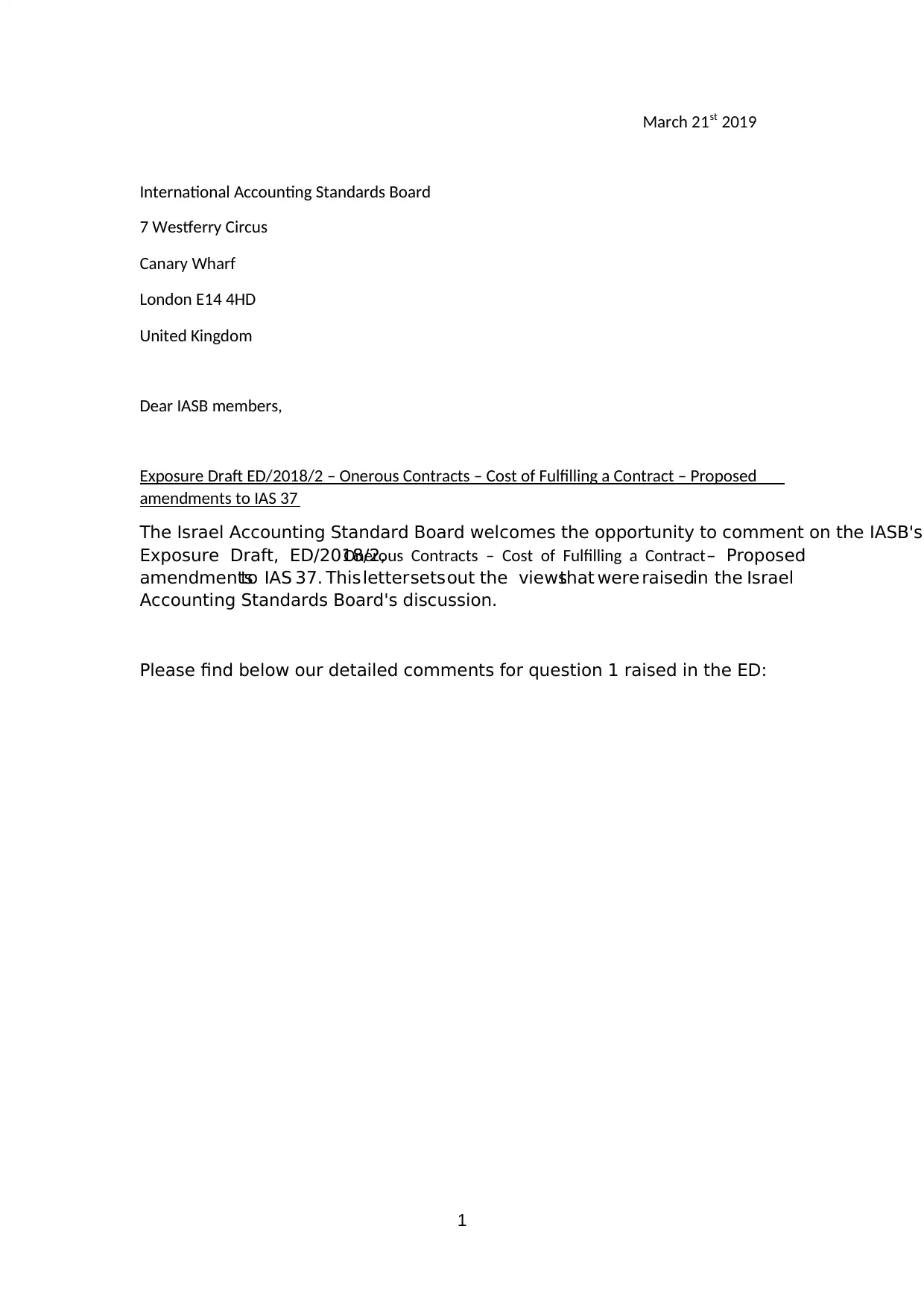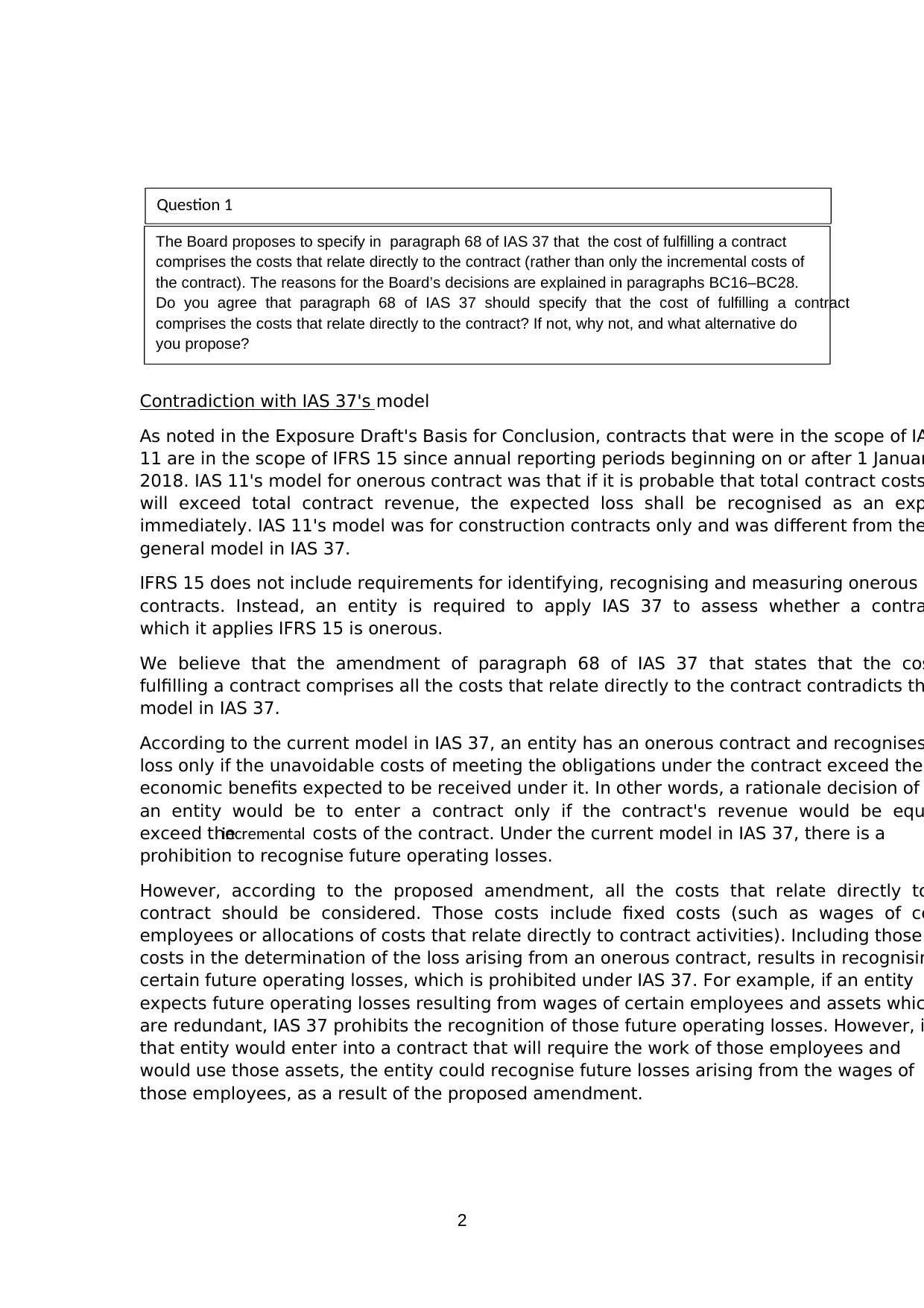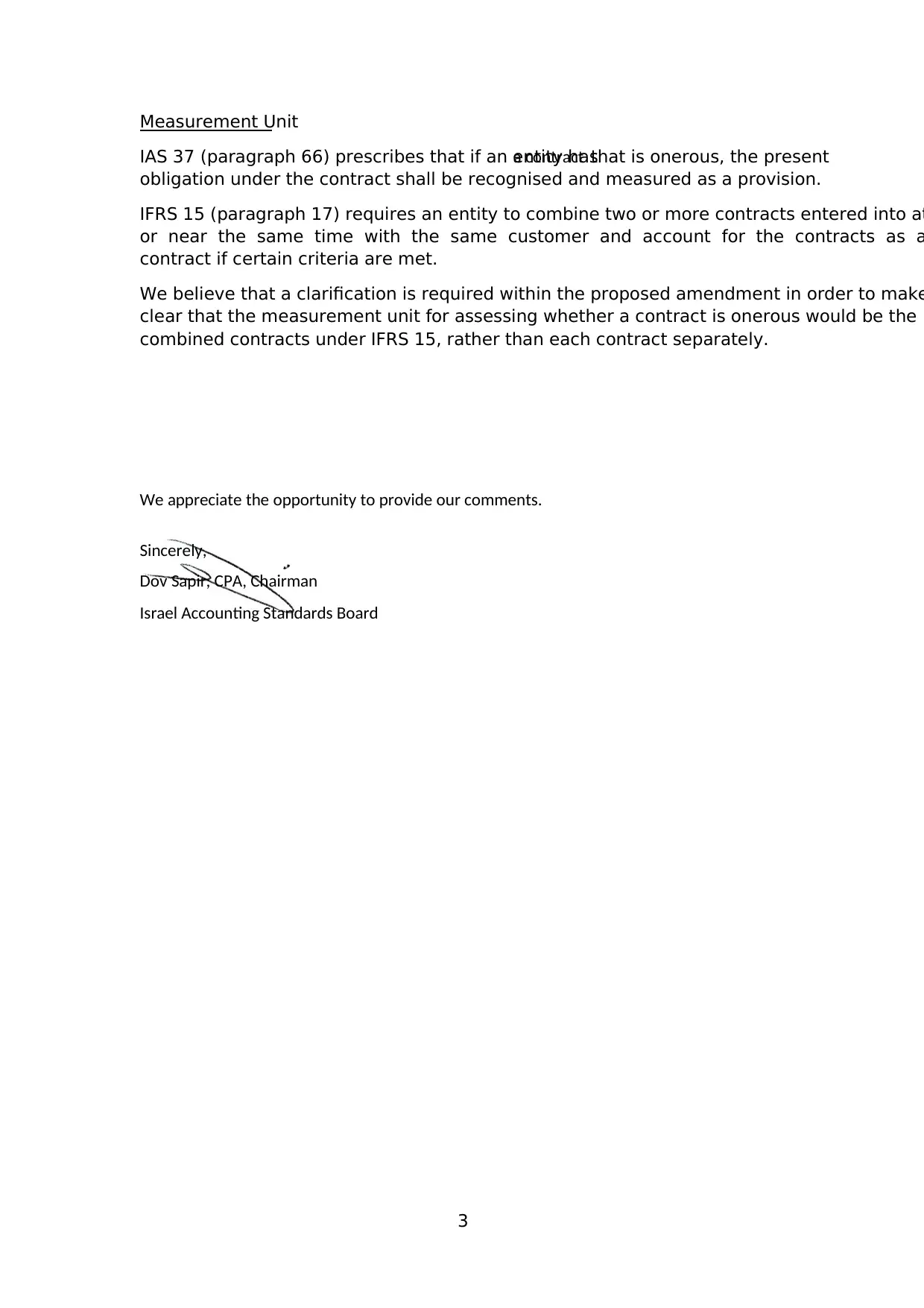IASB ED/2018/2 and IAS 37: Israel Accounting Standards Board Response
VerifiedAdded on 2022/11/14
|3
|766
|246
Report
AI Summary
This document presents the Israel Accounting Standards Board's response to the International Accounting Standards Board's (IASB) Exposure Draft ED/2018/2, which addresses onerous contracts and proposed amendments to IAS 37. The response focuses on the proposed specification in paragraph 68 of IAS 37 regarding the cost of fulfilling a contract. The Board raises concerns about a potential contradiction with the existing IAS 37 model, particularly regarding the recognition of future operating losses. It argues that including all costs directly related to a contract, including fixed costs, could lead to the recognition of losses currently prohibited under IAS 37. The response also highlights the need for clarification on the measurement unit for assessing onerous contracts, suggesting that it should align with the combined contracts approach under IFRS 15. The document provides detailed arguments and examples to support these viewpoints, emphasizing the importance of maintaining consistency within accounting standards and providing clear guidance for entities. The response appreciates the opportunity to comment and contributes to the ongoing discussion on accounting for onerous contracts.
1 out of 3










![[object Object]](/_next/static/media/star-bottom.7253800d.svg)